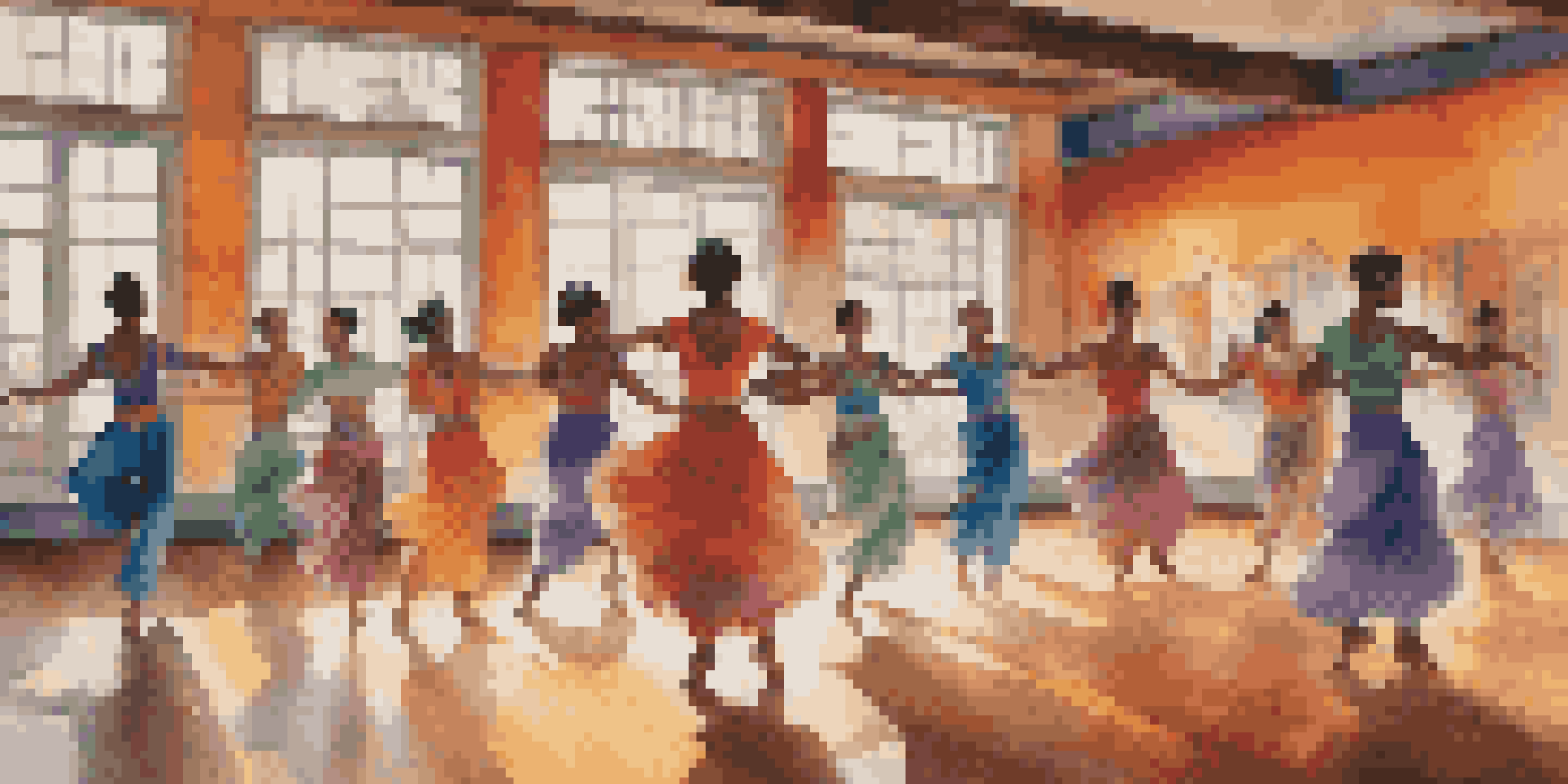The Role of Dancers in Combating Cultural Appropriation

Understanding Cultural Appropriation in Dance
Cultural appropriation occurs when elements of one culture are taken by another without permission or understanding. In the world of dance, this can manifest when artists adopt styles from cultures that are not their own, often stripping away their original significance. It's essential to recognize that dance is not just a series of movements; it's a form of expression deeply rooted in cultural identity.
Dancers as Cultural Educators
Dancers have the unique ability to educate audiences about the origins and meanings behind various dance styles. By sharing stories and historical contexts, they can foster appreciation rather than appropriation. For instance, a dancer performing a traditional Indian dance can explain its religious significance, helping viewers understand and respect its roots.
Understanding Cultural Appropriation
Cultural appropriation in dance occurs when elements are adopted without understanding their original significance.
Promoting Authentic Representation in Dance
Authentic representation is crucial in the dance community. When dancers from a particular culture perform their traditional styles, they bring authenticity and depth that outsiders may not capture. This representation not only honors the culture but also inspires others to appreciate and learn from it, creating a more inclusive environment.
Collaboration Over Imitation
Instead of imitating dance styles, collaboration between dancers of different backgrounds can lead to richer, more authentic art forms. By working together, they can create pieces that honor both cultures, showcasing the beauty of diversity. This collaborative spirit not only combats appropriation but also fosters mutual respect and understanding.
Importance of Authentic Representation
Authentic representation by dancers from specific cultures fosters appreciation and honors their unique traditions.
The Role of Social Media in Dance Appropriation
In today's digital age, social media plays a significant role in how dance is shared and perceived. While it can amplify cultural exchange, it can also lead to the rapid spread of appropriation. Dancers can use their platforms to raise awareness about the importance of respecting cultural origins and advocating for ethical practices within the dance community.
Supporting Indigenous and Marginalized Dancers
Supporting dancers from indigenous and marginalized communities is vital in combating cultural appropriation. By providing resources, funding, and platforms for these artists, we can uplift their voices and stories. This support not only helps preserve their cultural heritage but also encourages a broader conversation about representation in the arts.
Collaboration Enhances Dance Diversity
Collaborative efforts between dancers of different backgrounds can create richer art forms that celebrate cultural diversity.
The Impact of Education on Dance Communities
Education plays a pivotal role in shaping how dancers view cultural appropriation. Workshops and seminars focusing on the history and significance of various dance forms can foster a more informed community. As dancers become more educated about the cultures they engage with, they are better equipped to approach their art with respect and mindfulness.
Moving Forward: A Call for Conscious Creativity
Moving forward, it's essential for dancers to embrace conscious creativity. This means being aware of the cultural implications of their movements and making intentional choices in their performances. By prioritizing respect and understanding, dancers can lead the way in creating a more inclusive and appreciative dance community.